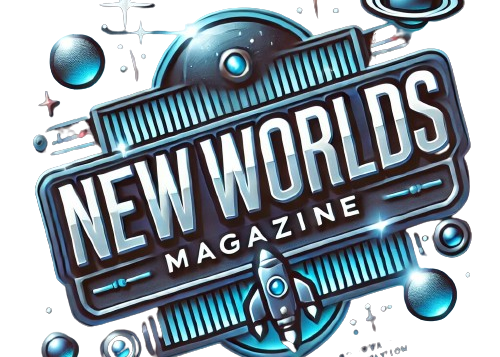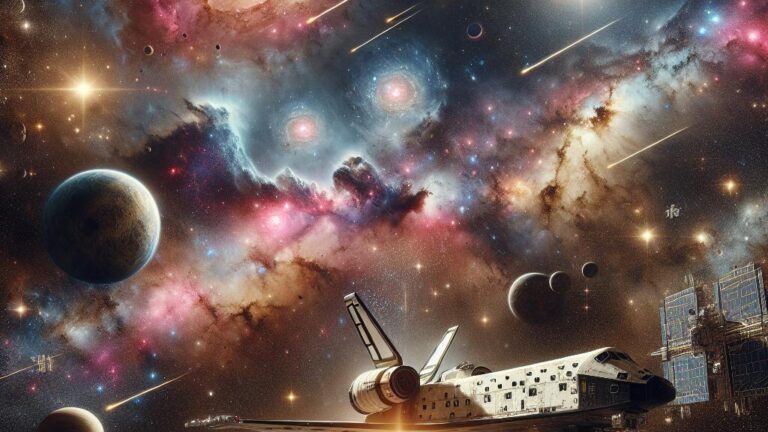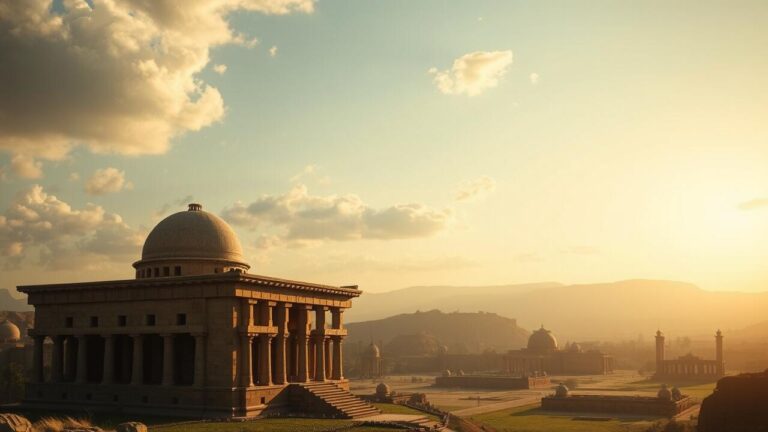The Fall of the Berlin Wall
The fall of the Berlin Wall on November 9, 1989—oh, what a momentous occasion it was! A seismic shift in the annals of history. This event didn’t merely signify the end of the Cold War; no, it carved through the very fabric that divided East from West—both in geography and belief systems. For nearly thirty long years, that wall loomed large—a stark barricade not just between families torn apart but also a towering emblem of an epic struggle: democracy versus communism. When its stones crumbled to dust, joy erupted across Germany and echoed around the globe—a testament to humanity’s insatiable thirst for unity and freedom.
Yet how did we arrive at such a remarkable juncture? The lead-up was nothing short of a whirlwind—a confluence of political upheavals sweeping through Eastern Europe like wildfire. Reform movements gathered steam; public protests against tyrannical regimes burgeoned with fervor. As Soviet power began to wane under Mikhail Gorbachev’s transformative reign, ideas like glasnost and perestroika bloomed—inviting voices previously silenced to rise up in defiance. This tidal wave culminated spectacularly with peaceful demonstrations in East Berlin—the pressure cooker finally bursting open as citizens clamored for their right to cross into West Berlin for the first time since that fateful day when concrete walls were erected. What a breathtaking tapestry woven from courage and hope!
Events Leading to the End of the Cold War
The late 1980s—what a whirlwind it was! A seismic shift in the geopolitical landscape unfolded, with a cocktail of factors stirring up tensions within the Soviet bloc. Picture this: economic stagnation gripping the USSR and its Eastern European neighbors like an iron fist, igniting a firestorm of dissent among restless citizens. They clamored for political freedoms and transparency—voices rising from Poland to Hungary in a chorus of change. Enter Lech Wałęsa and the Solidarity movement in Poland—a beacon of defiance against communist tyranny that reverberated far beyond its borders. The energy was infectious; nations caught wind of this fervor, fueling widespread demands for reform.
But wait! Here comes Mikhail Gorbachev, stepping onto the stage with his game-changing policies. Glasnost—an audacious call for openness—and Perestroika—a bold attempt at economic restructuring—were not merely slogans but invitations to challenge the status quo. Suddenly, there was room to breathe; dissidents found their voices amid newfound liberties while arms reduction treaties struck with Western powers hinted at an unexpected willingness to engage on diplomatic fronts. It wasn’t just internal unrest bubbling over—it was Gorbachev’s initiatives intertwining with popular movements that set off fireworks across global relations, paving the way for nothing short of a monumental transformation and ultimately leading toward the dramatic dissolution of the Soviet Union itself. What an era it was!
| Event | Year | Significance |
|---|---|---|
| Formation of Solidarity in Poland | 1980 | Marked the beginning of organized resistance against communist rule. |
| Glasnost and Perestroika introduced by Gorbachev | 1985 | Promoted openness and economic restructuring, setting the stage for reform. |
| Fall of the Berlin Wall | 1989 | Symbolized the collapse of communist control in Eastern Europe. |
| Dissolution of the Soviet Union | 1991 | Marked the end of the Cold War and the official breakdown of the USSR. |
The Evolution of the Women’s Suffrage Movement
The pursuit of women’s suffrage in the United States—what a tumultuous journey it was! It all ignited in the mid-19th century, driven by an unwavering hunger for equality and justice. Picture this: 1848, a gathering unlike any other—the Seneca Falls Convention, orchestrated by formidable activists like Elizabeth Cady Stanton and Lucretia Mott. Here lay the seeds of change; here was birthed the Declaration of Sentiments, boldly illuminating the injustices heaped upon women while fervently championing voting rights.
As time marched on through those dynamic decades, the movement swelled with energy, propelled not just by its own momentum but also intertwined with broader social upheavals such as abolition and temperance. The landscape shifted dramatically! New tactics emerged like wildfire to capture hearts and minds across diverse audiences. Enter organizations like the National American Woman Suffrage Association (NAWSA), crucial architects of unity among states—a coalition that couldn’t be ignored!
Grassroots campaigns sprang forth; public demonstrations erupted into vibrant spectacles; media became an ally amplifying their clarion call. Yet, oh how they battled against fierce opposition—from staunch traditionalists clinging to outdated norms to skeptics who insisted that women’s place was firmly within domestic walls! But undeterred they pressed on! Throughout those late 19th and early 20th centuries, fueled by sheer tenacity and relentless spirit, suffragists scored monumental victories culminating gloriously in 1920 when the 19th Amendment finally bestowed upon women their long-sought right to vote—a victory echoing through history!
Key Figures and Landmark Legislation
The saga of the women’s suffrage movement in the United States unfolds like an intricate tapestry woven with the threads of tenacity and fervor, featuring a cast of formidable figures who championed the cause for women’s voting rights. Figures such as Susan B. Anthony and Elizabeth Cady Stanton loomed large on this stage, orchestrating monumental rallies that reverberated through society while penning pivotal documents like the Declaration of Sentiments back in 1848—a clarion call echoing from history’s depths. Their relentless endeavors, alongside countless others whose names may fade into obscurity yet whose contributions were no less vital, ignited a national dialogue about gender equality and voting rights that demanded to be heard.
Fast forward to 1920—the ratification of the 19th Amendment emerged as a watershed moment in this ongoing struggle for women’s suffrage. This groundbreaking legislation boldly declared that states could no longer deny individuals their right to vote based solely on sex—an audacious shift etched into American history’s annals. The passage wasn’t merely a stroke of legislative luck; it was forged through decades fraught with activism, impassioned protests, and strategic lobbying efforts—each element intertwining to create a powerful force for change. It stood not just as a triumph for suffragists but also signaled an exhilarating transformation within America’s political landscape—a deep-seated acknowledgment that democracy should encompass all voices.
And so, even today, echoes from this movement resonate profoundly within our conversations surrounding gender equity and civil rights—reminders that progress is often hard-won but always worth fighting for in pursuit of justice!
The Great Depression
The economic upheaval of the 1930s, famously dubbed the Great Depression, reshaped not just the United States but numerous nations across the globe in ways that were both profound and far-reaching. It all kicked off with the catastrophic stock market crash of 1929—a seismic event that unleashed a domino effect, leading to an avalanche of bank failures, shuttered businesses, and unemployment rates that soared into chilling territory. Millions—yes millions—of Americans found themselves grappling with dire financial straits; families scrounging for even their most basic needs became a common sight. The sheer instability of this era ignited sweeping social transformations as individuals and entire communities banded together in acts of solidarity to weather this storm.
In light of such despair, the government sprang into action with an arsenal of programs designed to reignite economic vitality and offer succor where it was sorely needed. With initiatives like the New Deal at its helm, there emerged a revolutionary shift in how federal authorities engaged with both the economy and its citizens—their very relationship transformed! Through a tapestry woven from reforms aimed at job creation alongside direct aid efforts, these programs sought to lighten burdens borne from rampant unemployment. This tumultuous epoch heralded not just immediate relief but also set a precedent for future governmental strategies when confronting economic crises head-on.
The Role of Government in Economic Recovery
In the tumultuous shadows of the Great Depression, a seismic shift occurred—government intervention emerged as an essential lifeline, guiding the beleaguered economy toward a semblance of recovery. Policymakers, fueled by urgency and necessity, unveiled a tapestry of programs designed to spark job creation and extend relief to those ensnared in unemployment’s grip. Enter the New Deal, championed by President Franklin D. Roosevelt—a bold blueprint that sought not just recovery but rejuvenation!
With infrastructure projects springing up like wildflowers after rain, the government aimed to invigorate public works while simultaneously rekindling consumer confidence—a dual mission fraught with challenges yet ripe with potential. These initiatives became crucial cogs in lifting the economy from its dismal depths.
However, this journey toward economic revival was anything but straightforward; it demanded a kaleidoscopic strategy encompassing both immediate relief measures and sweeping structural reforms for sustainable growth. The banking sector found itself under scrutiny as regulations were enacted to stabilize financial systems and restore faith among wary citizens. Alongside these efforts came social safety nets—lifelines for vulnerable populations that provided much-needed security when it had all but evaporated.
This era underscored an undeniable truth: active government involvement reshaped how citizens viewed their relationship with the state—an evolution highlighting the indispensable role of public policy in navigating through economic storms and crises alike!
The Significance of World War II
The conflict, a seismic upheaval in the fabric of international relations, forged the United States and the Soviet Union into titanic superpowers. The ideological clash—capitalism versus communism—fanned flames that would spark the Cold War’s icy grip on global politics. Yet, this tumultuous period also catalyzed dramatic alterations to national borders; new nations emerged like phoenixes from ashes, while decolonization swept across various territories with fervor.
In response to such chaos and aspiration for stability, the United Nations was born—a beacon for international cooperation aimed at quelling future disputes and echoing a unified yearning for peace among fractured nations.
Meanwhile, civilians found themselves ensnared in profound transformations during and long after those harrowing years. Economies underwent radical metamorphoses as wartime production birthed leaps in technology and industry; an evolution so striking it reshaped livelihoods. Social dynamics were similarly upended: women surged into workplaces en masse, shattering traditional gender roles with unprecedented vigor. Concurrently, human rights movements surged forth like a tide against oppression—an urgent outcry sparked by revelations of war’s atrocities—which laid down vital groundwork for advocacy efforts seeking to safeguard individual freedoms on a global scale.
Global Consequences and Aftermath
The echoes of WWII reverberated through the corridors of international relations, crafting a new order that continues to shape global politics in ways both subtle and profound. Enter the United Nations—a bold experiment in fostering collaboration among nations, striving earnestly to avert the specter of future conflicts lurking just beyond the horizon.
Meanwhile, a wave of decolonization surged forth as former colonies fervently sought their autonomy from European overlords. This tumultuous quest for independence not only reconfigured political boundaries but also sent shockwaves through power dynamics worldwide—an upheaval that left few stones unturned.
On the economic front, countries grappled with an immense task: resurrecting shattered infrastructures while simultaneously untangling themselves from the lingering shadows cast by the Great Depression that had preceded this catastrophic war. Ah, but here came the Marshall Plan! A lifeline thrown to Western Europe, it showered much-needed aid upon nations rising from ruin, igniting sparks of recovery and economic stability. Yet this was no mere act of charity; it was also a strategic maneuver aimed at stifling communism’s advance by fortifying capitalist economies across the region.
And so it began—the seeds of what would blossom into the Cold War were sown during these fraught times, as ideological rifts between East and West sharpened and deepened like cracks in parched earth waiting for rain.
- The establishment of the United Nations aimed to promote peace and security among nations.
- Decolonization movements led to the emergence of new countries and reshaped global power dynamics.
- The Marshall Plan was crucial in aiding the economic recovery of Western Europe post-WWII.
- Rising tensions between capitalist and communist ideologies paved the way for the Cold War.
- Economic competition during the Cold War spurred technological advancements and arms races.
- The war’s aftermath influenced contemporary conflicts and geopolitical strategies worldwide.
- International relations today are still impacted by the historical consequences of WWII.
The Influence of Ancient Civilizations
Ah, the echoes of ancient civilizations—their whispers still resonate through the corridors of modern society! They laid down a mosaic that intertwines governance, architecture, philosophy, and science in ways both intricate and profound. Think Mesopotamia with its cradle of civilization; consider Ancient Egypt’s monumental legacies; reflect on Greece’s philosophical musings; marvel at Rome’s engineering prowess. Each one has cast a long shadow that dances across our present day.
Take democracy—an idea sprouting from the fertile grounds of ancient Greek political systems—it’s as if time itself folded back upon us! And those Roman innovations? Their legal frameworks and urban designs are not mere relics but living blueprints shaping our cities today.
But it doesn’t stop there! The cultural practices woven into the fabric of these early societies serve not just as threads but as foundational pillars for art and literature. The myths, oh those captivating tales echoing through ages—they have ignited sparks in countless works throughout history! A grand tapestry of storytelling ensues—a tradition alive and kicking in our modern narratives!
Then there’s mathematics and astronomy—the brainchildren of ancient scholars whose insights prop up today’s scientific marvels like archways above bustling streets. It’s astonishing to ponder how deeply entrenched these early civilizations remain within the very essence of contemporary life!
Lasting Contributions to Modern Society
Ancient civilizations, with their intricate tapestries of innovation and thought, have woven the very fabric of our modern society in ways both profound and multifaceted. Picture this: the birth of writing systems in Mesopotamia and Egypt—tools that not only chronicled history but also sculpted the edifice of governance itself. Imagine the Greeks and Romans, whose mathematical genius and engineering prowess erected a foundation for architectural marvels and infrastructural feats that still echo today. These early sparks ignited a blaze of progress, fostering societies that would flourish amidst challenges.
Now consider the philosophical musings from giants like Confucius, Plato, and Aristotle—intellectual titans whose ideas ripple through time, shaping contemporary discourse on ethics, governance, education—the trifecta upon which we build our lives. And let’s not overlook those ancient legal codes; they laid down principles that resonate within today’s judicial frameworks—championing justice while championing individual rights. As we trace back to those primordial agricultural practices cultivated by early societies, we uncover roots vital for sustaining our populations even now—a testament to their lasting legacy in food production systems essential for survival.
Conclusion
Throughout the tapestry of history, pivotal moments have intricately woven themselves into the fabric of our world, leaving indelible marks. The conclusion of the Cold War unleashed a whirlwind of political transformations that rattled nations to their cores. Meanwhile, social movements—like the relentless march for women’s suffrage—heralded monumental strides toward equality that echoed through time.
Economic upheavals, such as the Great Depression, didn’t just rattle economies; they forced governments to reimagine their roles and scramble for recovery strategies that would forever alter the landscape of policy-making.
The reverberations of global conflicts like World War II are not mere whispers but thunderous roars in today’s international relations arena. And let’s not forget—the legacies left by ancient civilizations still pulse within our contemporary culture, governance structures, and technological advances. Delving into these historical events is akin to peering into a kaleidoscope; it offers rich insights into the labyrinthine complexities of change and humanity’s unending odyssey forward.
FAQS
What was the significance of the Fall of the Berlin Wall?
Ah, the Fall of the Berlin Wall in 1989—what a monumental event! It wasn’t just bricks and mortar tumbling down; it marked a seismic shift, signaling not only the end of an era defined by Cold War tensions but also heralding a new dawn for East and West Germany. This watershed moment ignited a spark that fueled greater European unity and unleashed waves of democracy sweeping across Eastern Europe.
What were some key events that led to the end of the Cold War?
A tapestry woven with pivotal threads, if you will! The arms race escalated like an intense game of brinkmanship; meanwhile, economic woes gnawed at the Soviet Union’s foundation. Enter reformist leaders like Mikhail Gorbachev—his vision reshaping dialogue—and let’s not forget those fervent public movements clamoring for transformation. Each event cascaded into another, culminating in this historic thaw.
What impact did the Women’s Suffrage Movement have on society?
Oh, where do we even begin? The Women’s Suffrage Movement—a catalyst for change! It championed women’s rights fiercely and triumphed eventually in securing voting privileges. This wasn’t merely about ballots; it fundamentally redefined societal roles while amplifying calls for gender equality that still resonate today!
How did the Great Depression affect government policies?
Picture this—the Great Depression hit hard like an unexpected storm, sending shockwaves through economies everywhere. In response, governments rolled up their sleeves to intervene decisively through initiatives such as FDR’s New Deal—a radical approach aimed at providing relief to suffering citizens while sparking recovery efforts and laying down reforms designed to stave off future economic calamities.
What were the global consequences of World War II?
A cataclysmic conflict indeed—the global aftermath reverberated far beyond battlefields! We witnessed birth pangs of institutions like the United Nations emerging from chaos alongside geopolitical shifts that divided Europe into factions. Not to mention sweeping social changes coupled with profound economic transformations—it all set humanity on an entirely new trajectory!
How have ancient civilizations influenced modern society?
Ancient civilizations—those venerable architects of culture! They laid down essential blueprints shaping our present-day life—from legal systems echoing justice principles to democratic ideals lighting pathways toward governance. Their architectural marvels stand tall amidst us today while scientific discoveries continue to propel innovation forward—all these elements intertwining seamlessly within contemporary existence.







